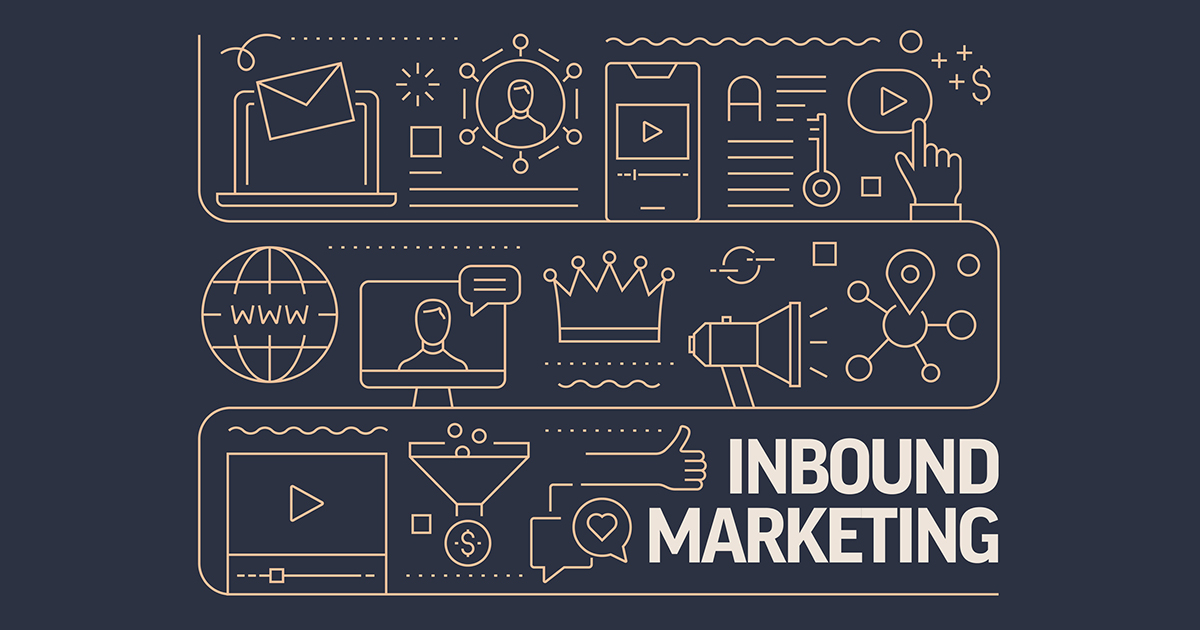What is Inbound Marketing? – IQnection – A Digital Marketing Agency
Eric Jacobson, IQnection’s Business Development Manager, explains Inbound Marketing.
“Which ad experience do you prefer?”
If you subscribe to Hulu, you’ve likely heard that question while streaming one of their shows. And maybe you replied “None. We’d prefer not to ‘experience’ any ads.”
This could be our bias showing as a company that does inbound marketing, but there are numbers to back us up: people don’t want to see traditional advertising.
{{cta(‘4a872eaf-7b27-4449-ad4e-c99dff29a715′,’justifyright’)}}
Today we’re going to dig a little deeper today into the differences between inbound marketing and outbound marketing, a term which applies to ads on TV, radio, in print, and on billboards, as well as direct mail and cold calls.
What is inbound marketing? Inbound marketing is a strategy based on the idea of allowing customers to find you. Its tools include blogs, e-books, white papers, social media and search engine optimization.
Here are five ways inbound marketing is different from – and superior to – outbound:
1. Ask Permission
 Inbound marketing targets people who already want to hear your message and tries to answer their questions. Think of your company blog. You take a topic connected to what your business does, and then publish a post that helps potential customers solve a problem. Rather than interrupting something they’re watching or reading, you’ve created a message aimed at people interested in what you do.
Inbound marketing targets people who already want to hear your message and tries to answer their questions. Think of your company blog. You take a topic connected to what your business does, and then publish a post that helps potential customers solve a problem. Rather than interrupting something they’re watching or reading, you’ve created a message aimed at people interested in what you do.
Outbound marketing doesn’t ask permission. It disrupts, broadcasting its message with the hopes that part of the audience will listen and become a customer.
2. Be Educational
The goal of inbound marketing is to create a detailed, valuable piece of content meant to  educate and engage. Rather than telling people about a sale or why your company is superior to competitors, you’re trying to answer their questions, solve their problems and establish yourself as an authority in your field.
educate and engage. Rather than telling people about a sale or why your company is superior to competitors, you’re trying to answer their questions, solve their problems and establish yourself as an authority in your field.
Outbound marketing simply needs to stand out, without as much concern for who’s getting the message. As Jeff Rosenblum of Questus put it a few years back, outbound marketing’s message is “inherently obfuscated.”
3. Tell Your Story
 With outbound marketing, you’re a little fish in a big pond. You might do something that’s memorable, but it could be at the cost of your message, and there’s no guarantee anyone will hear you. It’s also a one-way line of communication.
With outbound marketing, you’re a little fish in a big pond. You might do something that’s memorable, but it could be at the cost of your message, and there’s no guarantee anyone will hear you. It’s also a one-way line of communication.
With inbound marketing, the pond is all yours. It lets you tell the story you want to tell to an audience who is looking to hear it. Rather than rolling out a flashy ad and hoping to get noticed, you’re putting your message front and center. And even though it’s you telling your story, the methodology is designed to be interactive.
4. Long Lasting

There are ad campaigns that stick with us, and some that stick around for quite a while. (“Got Milk?” lasted 20 years, with the Milk Education Program finally retiring the slogan in 2014.) But most outbound marketing is fleeting: you get leads, make sales, and move onto a new campaign.
With inbound marketing, the content you create lasts longer. The blog post you create today will still have value a month or a year from now. If your social media interactions pull in 10,000 fans, those are people who will continue to advocate for you down the road.
5. Provide Measured Results
 Finally, inbound marketing is quantifiable. Inbound lets you use closed loop reporting to track every step of someone’s journey from visitor to lead to customer.
Finally, inbound marketing is quantifiable. Inbound lets you use closed loop reporting to track every step of someone’s journey from visitor to lead to customer.
With outbound marketing, it’s more difficult to track that journey. Asking “How did you hear about us?” doesn’t give you a complete picture.
And although we skipped over the figures about outbound marketing earlier in this post, it’s worth including two more: $332 and $134. The first number is the cost of finding one outbound lead. The second is the cost of attracting an inbound lead.
If you’re tired of doing marketing the old way, let IQnection introduce you to something new. Our team of marketing experts can help you tell your company’s story, creating content that people won’t want to skip over.
{{cta(’12c6f0f5-e5a7-481b-82bf-054521839d28′)}}











